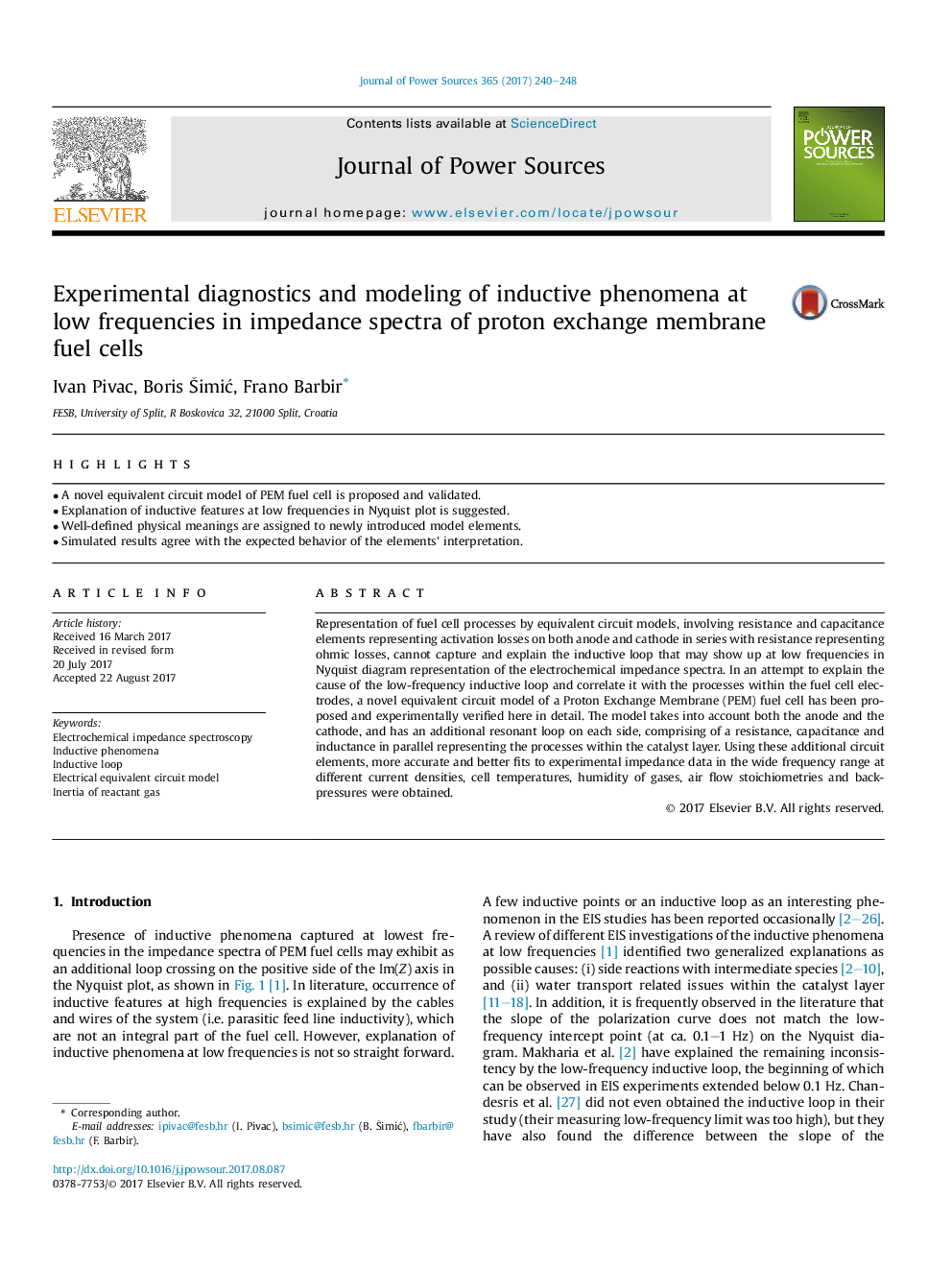| Article ID | Journal | Published Year | Pages | File Type |
|---|---|---|---|---|
| 5148785 | Journal of Power Sources | 2017 | 9 Pages |
Abstract
Representation of fuel cell processes by equivalent circuit models, involving resistance and capacitance elements representing activation losses on both anode and cathode in series with resistance representing ohmic losses, cannot capture and explain the inductive loop that may show up at low frequencies in Nyquist diagram representation of the electrochemical impedance spectra. In an attempt to explain the cause of the low-frequency inductive loop and correlate it with the processes within the fuel cell electrodes, a novel equivalent circuit model of a Proton Exchange Membrane (PEM) fuel cell has been proposed and experimentally verified here in detail. The model takes into account both the anode and the cathode, and has an additional resonant loop on each side, comprising of a resistance, capacitance and inductance in parallel representing the processes within the catalyst layer. Using these additional circuit elements, more accurate and better fits to experimental impedance data in the wide frequency range at different current densities, cell temperatures, humidity of gases, air flow stoichiometries and backpressures were obtained.
Related Topics
Physical Sciences and Engineering
Chemistry
Electrochemistry
Authors
Ivan Pivac, Boris Å imiÄ, Frano Barbir,
